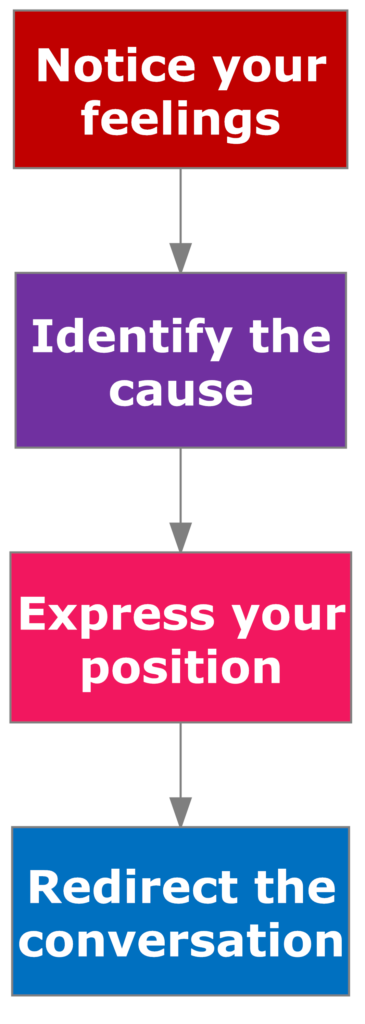Keeping your personal boundaries intact is the key to maintaining your psychological safety. Here’s how to assert your boundaries when someone invades them.
Your boundaries define the ‘space’ you place between yourself and others – both physically and psychologically. Healthy boundaries help you make appropriate contact with others. Unhealthy boundaries can create a sense of detachment or over-dependence on others.
 Maintaining healthy boundaries means communicating your physical and psychological limits to others. For example, if a colleague asks inappropriately personal questions, you could maintain your personal boundary by saying “I’d prefer not to discuss personal matters at work.” Appropriate boundary setting involves X steps.
Maintaining healthy boundaries means communicating your physical and psychological limits to others. For example, if a colleague asks inappropriately personal questions, you could maintain your personal boundary by saying “I’d prefer not to discuss personal matters at work.” Appropriate boundary setting involves X steps.
1. Notice your feelings
If you feel uncomfortable, embarrassed or nervous there’s a good chance your boundaries are being infringed. Take time to notice how you feel.
2. Identify the cause of those feelings
Ask yourself “what triggered this feeling?” If a boundary violation has occurred, you’ll be able to pinpoint an action or verbal statement made by the other person.
3. Speak up assertively
Make eye contact and stand up straight. Keep your voice calm and polite. Tell the other person how you feel. Then redirect the conversation. For example, say “I feel uncomfortable talking about my relationship with my partner here. I’d prefer we talk about something less personal. How is the service project going?”
You can use these three steps to assert your boundaries with colleagues, clients and managers.
Need advice on what to say? Ask Eleanor now. Send your question and we’ll answer it in a future blog post.
[convertkit form=5135167]
